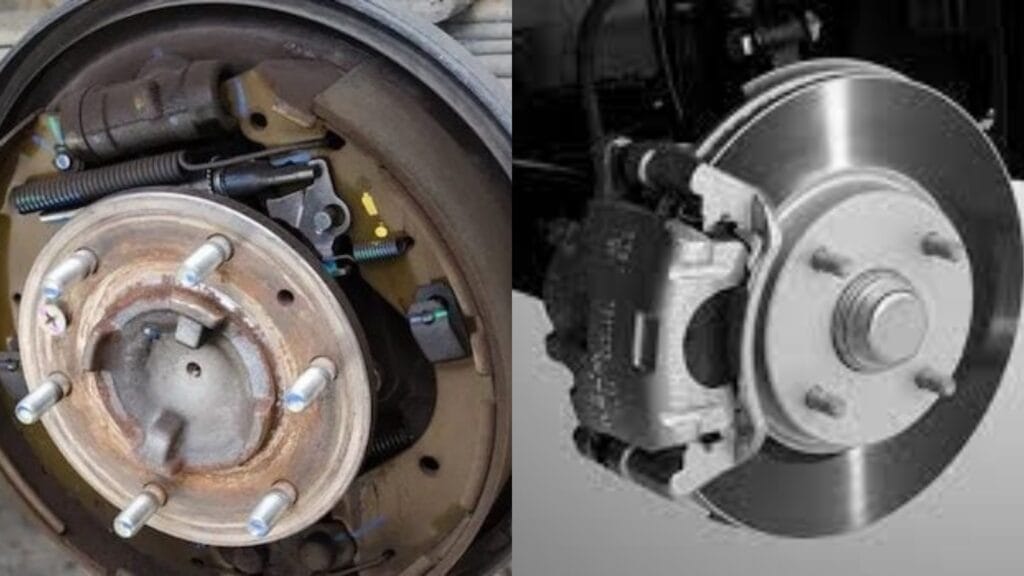Motorcycle braking systems have undergone significant evolution over the decades, transitioning from rudimentary drum brakes to the highly efficient disc brakes seen on modern bikes. This evolution has been driven by a quest for enhanced safety, improved performance, and better rider control.
In this article, we’ll delve into the fascinating journey of motorcycle braking systems, tracing their evolution from the traditional drum setups to the advanced disc brake technology used today.
The evolution of motorcycle braking systems from drum to disc represents a journey of innovation and progress driven by the quest for safer, more responsive, and more reliable braking performance.
Also Read: 2024 Bajaj Pulsar NS200 bike to be launched Soon in India, Know its expected features
While disc brakes have become the standard in modern motorcycles, ongoing advancements in technology promise to further elevate the standards of motorcycle safety and performance in the years to come.
The Era of Drum Brakes:
Drum brakes were the standard braking system on motorcycles for many years. Initially, these brakes consisted of a simple drum-shaped housing encasing brake shoes, which expanded outward when the brake lever or pedal was activated.
While effective for their time, drum brakes had limitations in terms of heat dissipation, leading to brake fade during prolonged use. Moreover, they lacked the stopping power and modulation capabilities demanded by high-performance motorcycles.
Introduction of Disc Brakes:
The advent of disc brakes in motorcycles marked a significant leap forward in braking technology. Unlike drum brakes, which relied on friction between brake shoes and a drum surface, disc brakes utilized a rotor and caliper system.
Disc brakes offered several advantages, including improved cooling properties, better resistance to brake fade, and enhanced stopping power. This innovation revolutionized motorcycle braking performance, particularly in demanding riding conditions such as high speeds and steep descents.
3- Combine Braking System (CBS)
Combined Braking System (CBS) is very much in trend these days. In this system both front and rear brakes are applied simultaneously from the left brake lever. Bikes which are fitted with CBS provide better braking and there is no possibility of the rear wheel locking or slipping, thus preventing accidents.
CBS has been made mandatory as standard in bikes with engines of 125cc and less in the country. In economical bikes it works like ABS. In CBS you cannot use one break at a time.
Evolution of Disc Brake Technology:
Over time, disc brake technology has continued to evolve, incorporating advancements aimed at further enhancing performance and safety. Anti-lock Braking Systems (ABS) were introduced to prevent wheel lock-up and skidding during emergency braking, improving rider control and stability.
Hydraulic disc brakes became commonplace, offering superior modulation and more precise braking compared to mechanical systems. Dual-disc setups became standard on many motorcycles, providing increased braking power and redundancy for added safety.
Integration of Electronic Aids:
Modern motorcycles often feature electronic aids such as traction control and cornering ABS, which complement the braking system. These systems utilize sophisticated sensors and algorithms to optimize braking performance in various riding conditions, further enhancing rider safety and confidence.
Electronic aids work in conjunction with advanced disc brake technology, forming a comprehensive braking package that delivers unparalleled control and responsiveness.
Future Innovations and Challenges:
The evolution of motorcycle braking systems is an ongoing process, with manufacturers continually striving to push the boundaries of performance and safety.
Emerging technologies such as brake-by-wire systems and regenerative braking hold promise for further advancements in motorcycle braking efficiency and sustainability. However, challenges such as cost, weight, and complexity must be addressed to ensure widespread adoption of these innovations in the motorcycle industry.
Also Read: Honda Bikes sales report in January 2024, sold more than 4 lakh bikes

